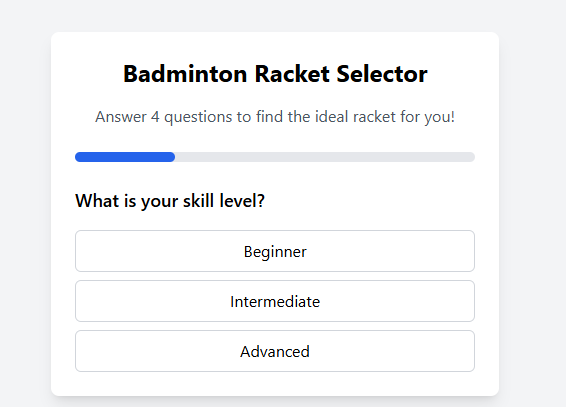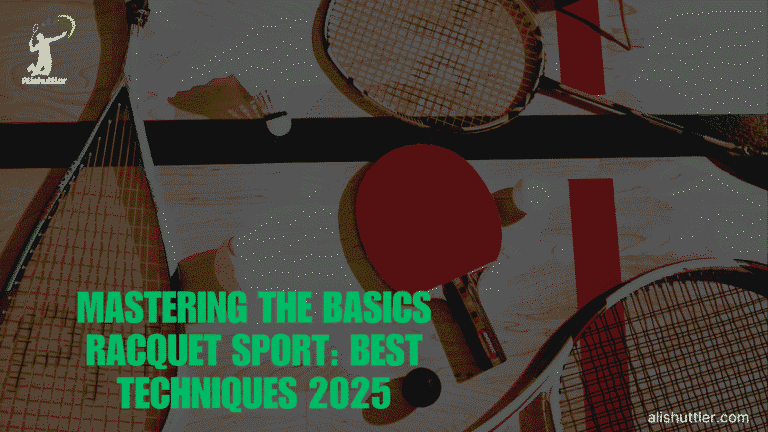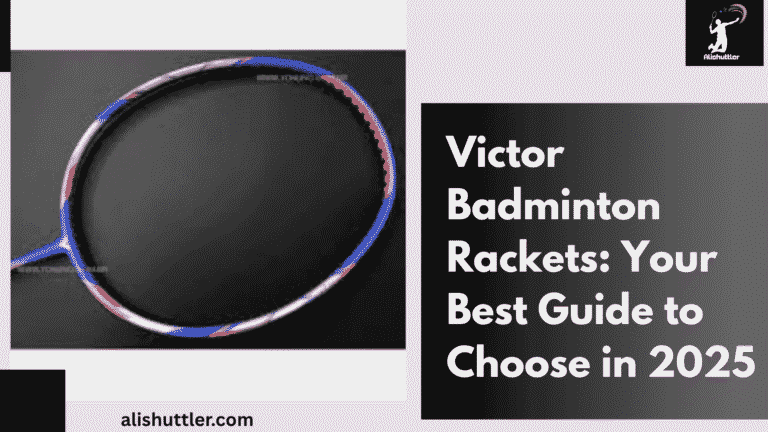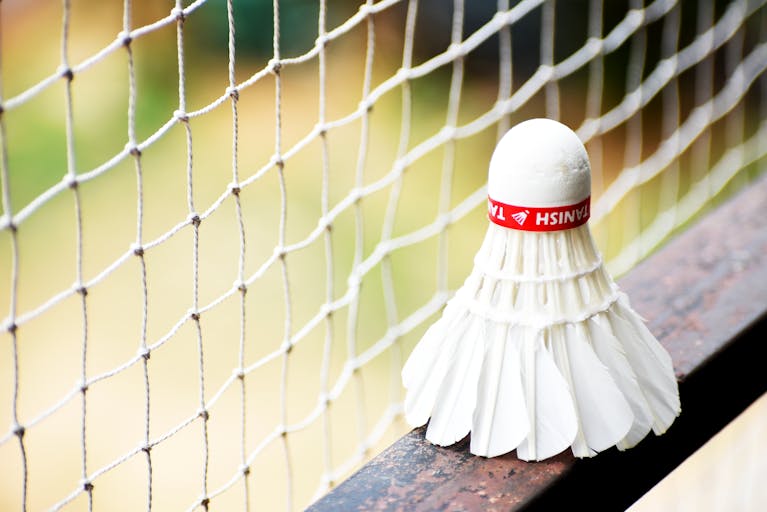Power in badminton refers to the amount of force a player can generate behind their shots, which typically determines the velocity and impact of the shuttlecock.
Players develop power with the proper grip, rapid footwork, and a powerful wrist snap. A lot of the best players work out with drills and light weights to give their smashes and clears more punch.
To yield the greatest results, understanding power fundamentals can assist at any level of play.
Defining Power
Power in badminton refers to the ability to smash the shuttlecock with exceptional force and speed. It manifests itself in every smash, clear and drive. A power player is one who can shoot the shuttlecock at high speed across the court. This can compel the competitor to act rapidly and react under stress.
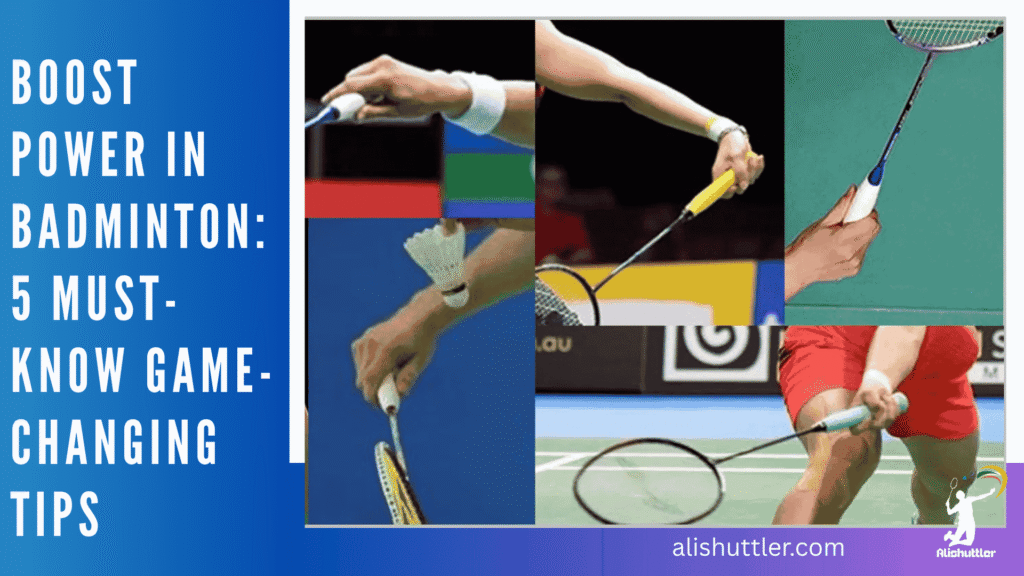
The pace of play on court tends to increase when a player can strike harder. Not just strength is power. It comes from how quickly a player swings the racket. Both velocity and force are components of power. These can be conditioned by easy drills and gym work such as squats or sprints.
For instance, a player with a one rep max squat of 100kg has more power than one who can only manage 50kg. This increased power allows them to generate more power on every shot.
Racket choice counts as well. Some rackets are head-heavy, which implies weight is concentrated toward the upper part of the racket. This provides extra power and can assist players in generating more powerful shots.
Some go for lighter rackets for more speed, but that can translate to less power behind the shuttlecock. The balance of the racket alters the interplay of power and speed. Technique goes a long way in determining how much power’s generated.
Great players use their entire body. They drive off the legs, pivot the hips and flick the wrist at the last second. Each body part contributes additional power to the shot. Even a subtle adjustment, such as striking the shuttle a centimeter further up or down, can alter the power and velocity of the shot.
Power changes the game. The harder hitter frequently dictates the pace. They can win rallies by driving the opponent back or inducing soft returns. This facilitates point completion.
Power assists stamina as well. Once a player no longer has to expend extra effort on every shot, he or she can sustain the level for longer matches. Muscle power and speed are not universal among players. Others are quick but light, others heavy handed but slow.
The best players strive to harmonize both. To speed is to power. A racket that moves faster through the air can hit the shuttle harder. Too much attention to speed can imply less control.
The trick is mixing the right cocktail for each player and their style.
The Power Source
Power in badminton is more than just swinging hard. It originates from a crisp combination of coiled body motions—legs, core, shoulders, forearm and wrist. All come into play to make shots quick, crisp and difficult to return. Understanding how to tap into these sources of power helps players level up and deploy energy intelligently.
1. Leg Drive
Legs are your foundation on powerful shots. Strong leg drive allows you to jump higher and to smash with greater force. While motions such as driving off the ground with both feet or exploding upwards into a jump provide additional velocity to the racket swing.
Athletes like to employ exercises like pistol squats to develop this type of power. Balance is essential. Powerful leg positioning holds your body stable in quick shots and prevents players from breaking loose.
Drills that make players lunge, shuffle or jump keep leg use peaking in every rally. These drills assist with rapid direction changes as well, allowing players to get to the shuttle faster and with more control.
2. Core Rotation
Twisting the core, or midsection, injects huge power into shots. When your waist turns, it seeds the chain that transmits ground energy up your body and into the shuttle. This motion is obvious on a smash, where a fluid twist of waist, then elbow, then wrist delivers a powerful, crisp blow.
Building core strength is not just about power. It aids equilibrium, allowing players to run quickly without toppling over. Moves such as planks, Russian twists, and medicine ball throws are ideal for developing this section.
Drills that make players twist their bodies while hitting boost timing and control, so the racket touches the shuttle just so. Neglecting core work can make shots weak and off-balance. By training on this, players can maintain their game during even the most grueling of rallies.
3. Shoulder Turn
The shoulder is, in other words, a hinge for the arm. A quick shoulder turn adds extra swing velocity and power to your shots. Good shoulder turn lines up your body, so energy flows from your legs and core to your arm.
Remember, it’s crucial to keep your shoulder in the right spot to maintain seamless power transfer! Exercises such as shoulder presses, bands or light weights help keep this area strong. Timing your shoulder turn with your arm swing helps the racket connect with full force.
4. Forearm Pronation
Forearm pronation is that twist of the forearm that accelerates the racket head. This shot is essential for quick angles and rapid smashes. Wrist and forearm stretches or light weight curls keep this part strong and free.
It controls where the shuttle travels as well. This twist can cause the shuttle to soar straight or on a sharp angle. Small drills, such as spinning the racket in your hand, serve to train this action.
Miss this twist and shots come up limp. It decreases control, resulting in difficult to strike targets.
5. Wrist Action
Wrist snap provides shuttle velocity and that crisp noise you hear in heavy smashes. The wrist is the last to move in the stroke. It provides a quick acceleration right before the racket strikes the shuttle.
This snap makes shots more difficult to return. Small wrist weights or squeezing a soft ball can develop wrist strength. Experimenting with various wrist actions in practice demonstrates how every type modifies the shot’s trajectory and velocity.
Timing the snap with the rest of the swing is critical for maximum power.
Enhancing Power
Power in badminton is not just about smacking. It’s about harnessing power, momentum and proper form to empower every shot. Players need to construct different varieties of power—explosive, nimble, and endurance—because each powers strong on-court movements.
Having the core strength, flexibility and quickness is the key to powerful performance. Enhancing Power requires a well-rounded method, from strength training to mobility and accurate monitoring.
Strength Training
- Compound moves such as squats, deadlifts and lunges that strengthen your legs and hips — which power your running and jumping. Pull-ups and push-ups blast the upper body, assisting racquet swings and net shots.
- Planks and twists work the core, which is essential for power moves and torso stability. Legs, back, shoulders, and core are important in badminton. These are the muscles that power fast lunges, quick jumps and hard smashes.
- Sessions need to incorporate resistance work for both endurance and power — lighter weights for speed, heavier for strength. Resistant bands or free weights preserve muscular endurance and increase power.
- Three sets of 8–12 reps for each move develop strength and stamina. Following training intensity and volume helps prevent injury. Tweak the load and rest for optimal muscle hypertrophy and recovery.
| Exercise | Sets | Reps | Muscle Group |
|---|---|---|---|
| Squats | 3 | 10-12 | Legs, Core |
| Deadlifts | 3 | 8-10 | Back, Legs |
| Lunges | 3 | 10-12 | Legs, Glutes |
| Push-Ups | 3 | 12-15 | Chest, Shoulders |
| Planks | 3 | 1 min | Core |
Plyometric Drills
- Jump squats increase vertical leap and leg power.
- Box jumps build explosive movement for fast direction changes.
- Medicine ball slams boost upper body speed and coordination.
- Lateral bounds improve side-to-side agility.
Agility ladders and cones accelerate footwork and hone reaction time. Shuttle runs and quick-feet patterns are drills that approximate match play and train your body to move with power.
Practicing “shadow movements” with a 2–3 kg weight in hand, mimicking hitting clears, is another method of developing explosive strength while keeping your muscle mass under control. Progress is measured by timing leaps, tracking shuttle runs or recording drill times. These easy tests demonstrate increases in velocity and force as you progress.
Flexibility
- Arm swings, leg swings and torso twists are great warm-up dynamic stretches.
- Hamstring stretches, calf stretches, and shoulder holds — static stretches for cool-down.
- Gentle yoga or deep stretching keep the joints and muscles limber.
Dynamic stretches prior to play prepare muscles for rapid actions. Static stretches post-training aid recovery and prevent stiffness. Good flexibility = better reach, safer play, and more control on tricky shots.
Progress Tracking
Repeated training and frequent feedback are essential to monitoring power increases. Use video, speed tests, and match stats as your feedback. Modify the training schedule as necessary.
Technique and Timing
Good badminton power is about technique and timing, not brute strength. What the elite players do is work on small things in their shot. They figure out how to use their whole body, not just that arm, to crank it. For instance, a powerful smash originates from the perfect combination of wrist snap, elbow lift, and shoulder turn.
Some players, such as Lee Chong Wei, demonstrate that you don’t need a huge body spin to hit a devastating smash. He frequently employs a move known as ‘over’ rotation, where he maintains a rapid, tight motion, yet achieves the velocity he requires. This demonstrates that there’s no single technique for smashes. Some coaches say turn the body more, others say keep the chest more square.
Even the technique of how players point their elbow before the smash can vary, but that doesn’t necessarily translate into a significant difference in the end result. The elbow and shoulder could appear identical on film, even if the body rotated more or less. Being aware of these minor specifics can assist you in discovering your optimal regimen.
Timing is the next blockbuster component. If you strike too early or too late, you sacrifice power. Good timing is when the entire body moves as one. The legs thrust upward, the torso rotates, and the arm whips at precise timing.
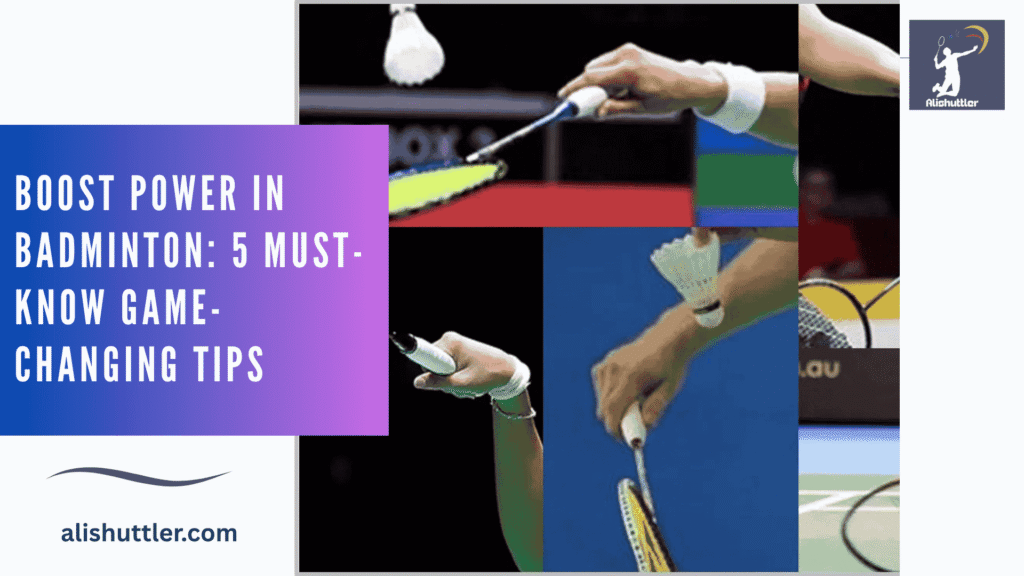
If you linger too front-facing, it can disrupt your back court movement. You could lose the rhythm that gets you striking the shuttle at its apex. That’s why players don’t just practice the smash, but footwork and setup. You want to time the shuttle perfectly opposite foot forward, body set, racket cocked back in for the swing.
Getting to practice lots of shot types is essential. A player who can hit just one kind of smash is readable. Play around with various smashes straight, cross-court, steep, or flat. Stir in clears, drops, and drives. Not only does this keep your opponent off balance, but it also helps you use power when it matters most.
Each of these shots demands its own timing and technique, so practice ’em all. Viewing video of yourself or of top players goes a long way. Study Lee Chong Wei and other matches and you can detect where they derive their power.
You’ll glimpse subtle body twists, a quick elbow, or a pivot in the footwork. Use these clips to test your own form. Make incremental adjustments, then experiment with them. That’s how elite players keep improving.
Equipment’s Role
The right equipment in badminton varies how much power you can inject into a shot. Racket design, string tension, grip and even small things like handle size all factor into how well you translate your power to the shuttlecock. The shape and construction of a racket, along with its balance and weight influence shot speed as well as control.
All of the five key components of a racket—the string bed, head, throat, shaft, and handle—play their role in enhancing performance. Below is a quick look at common racket types, their specs, and how they impact power:
| Racket Type | Weight (g) | Balance Point | Head Size (mm) | Power Influence |
|---|---|---|---|---|
| Head-Heavy | 85-89 | >295 (towards head) | 280×220 | Boosts smash and clear power |
| Head-Light | 80-85 | <285 (towards handle) | 275×215 | Allows quick swings, less raw power |
| Even Balance | 83-87 | 285-295 (middle) | 278×218 | Balanced for control and power |
| Lightweight | 78-82 | Varies | 275×215 | Easy to handle, less force in shots |
| Heavyweight | 90-95 | Varies | 280×220 | Generates more momentum, harder control |
Racket Choice
Selecting the right racket is the starting point for any player seeking additional punch. A head-heavy racket, for instance, shoves more weight behind every swing, resulting in quicker, harder shots. In contrast, a head-light racket allows you to swing quickly but may not provide as much power.
The racket’s width and length, meanwhile, being limited to a maximum of 680mm x 230mm, influence the amount of power you’re able to put into each shot. Discovering your optimal fit involves testing rackets with varying weights and balance points.
Some entrants opt for a heavier racket for power, while others prefer a lighter one for swing. Grip size is important as well. A comfortable grip is essential for maintaining control and efficiently applying your power. Most pros use uncoated grips designed for performance, not appearance, whereas new players occasionally select grips for style.
String Tension
String tension is yet another variable that alters your power. Lower string tension will inject spring and bounce, providing additional velocity to your shots. High tension, on the other hand, offers greater control but requires more arm strength to achieve the same power.
It’s clever to experiment with various string tensions to find what suits your game. Some players maintain a low string tension for powerful smashes, and others increase it to better position the shuttlecock.
The stringed plate, with a maximum length of 280mm and width of 220mm, is controlled, but small variations within these parameters impact feel and play. Strings go bad, so inspect them regularly. Maintaining strings in top form lets you experience the identical strike every single time.
Equipment in Play
Rackets with identical specs can feel different in actual matches. Minor variations, such as how much a racket flexes or the grip texture, can alter the amount of power you experience. Changing rackets or getting your string tension adjusted can significantly impact your entire game.
Trying different configurations will assist you to the perfect match for your personal hand and style. A good grip can reduce stress and increase comfort all game long.
All equipment, even the small stuff, counts for shot power.
Debunking Myths on Power in Badminton
Many people believe that power in Power in Badminton is solely about being able to hit the shuttlecock hard or smash it quickly. This concept may. True power in badminton isn’t just about size or muscle or how old your racket is. It comes from pounding pavement, or grass, or hardwood–knowing how to use body and mind and tools in concert to play smarter and sharper.
One myth is that tall players always win. Although height can assist in certain situations, such as blocking higher shots, it is not the primary factor that determines a player’s strength on court. Hundreds of top players across the globe demonstrate this. They demonstrate that quickness, footwork, timing and intelligent use of the wrist and core trump pure height any day.
Power in Badminton requires the entire body to cooperate. Legs push for movement, the core controls balance, and arms and wrists guide the racket. Good mechanics allow shooters of any stature to make swift, stinging shots.
Others believe that ancient rackets or strings will restrain power. In reality, the age of a racket is just one factor to verify. The real question is how well the racket matches the player’s game. Some desire a head-heavy racket for more Power in Badminton, others desire a lighter one for rapid swings.
Strings are important, but four years unopened packs don’t “expire” in a technical sense. What matters is the string type, tension, and how they match your playing style.
Another myth is that strength training will make a player slow or stiff, hurting agility. This is not the case when you train the right way. Top players train for hundreds of hours on footwork, speed and strength. They don’t create mere mass. They work on becoming strong but light on their feet.
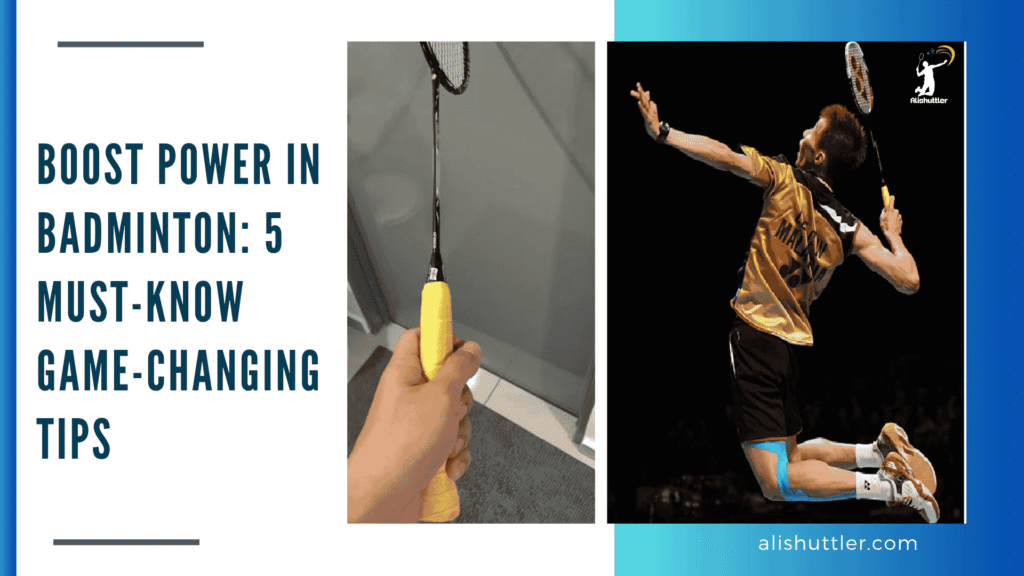
The magic is in combining strength with drills for speed and agility, not in simply lifting heavy weights. Most assume more power = better play. Badminton isn’t all about smashes. It’s a game of split-second decision making, precise shot placement and remaining calm under fire.
Doubles and singles each demand their own type of talent, but both require a balance of power, skill and strategy. Neither is easier. Both challenge a player’s mind and body.
Final Thoughts on Power in Badminton
Power in badminton is more than strong arms. Legs and core do the heavy lifting, but that right grip and fast wrist snap add punch. Little footwork adjustments can missile the shuttle across the court. Clever equipment, such as a light racquet or tight strings, can power shots.
Myths tell us that only big muscles matter, but it’s skill and timing that score points. Players of all builds can develop power by training smart and staying sharp with drills. To step up your game, test new moves in practice or shake up your gear for instant results. Have a favorite tip or drill? Pass it on and let the game go.
Frequently Asked Questions
What is power in badminton?
Power in badminton is the capability to hit the shuttlecock forcefully, propelling it to greater speed and distance. It’s had to smashes, clears and rapid fire attacks.
How do players generate power in badminton?
Players create power primarily with good body movement, a strong core and quick arm swings. Fine footwork and body rotation aid in generating power.
Can technique improve power more than strength?
Yes, good technique usually adds more power than strength. The right grip, the timing, and your body coordination are all necessary to ensure the maximum strength of the shot.
Does equipment affect power in badminton?
Yes, your racket and string tension matter for power. Low-weight rackets with a stiff shaft and the right string tension aid players to hit harder.
How can I safely increase my power in badminton?
Concentrate on strength training, flexibility, and rehearsing proper technique. Warming up before playing not only prevents injuries but helps you generate more power.
Is power only important for advanced players?
No, power matters at every level. Even beginners that learn to hit powerful shots fare better out on the court and feel more confident.
Are there common myths about power in badminton?
Yup, a popular myth is that strong arms alone are required for power. In fact, whole-body coordination and technique are just as important.


